Object Length In Javascript
In JavaScript, objects are a fundamental and powerful feature that allows developers to store and manipulate data. An object in JavaScript is a collection of key-value pairs, where each key is a unique string and each value can be of any type, including other objects. When working with objects, it is often necessary to determine their length, i.e., the number of key-value pairs they contain. In this article, we will explore various methods to calculate the length of an object in JavaScript and address some common questions and concerns related to this topic.
What are Objects in JavaScript?
Objects in JavaScript are essentially containers for organizing and manipulating data. They can be created using the object literal notation or the Object constructor. Here is an example of an object created using the object literal notation:
“`javascript
const person = {
name: “John Doe”,
age: 30,
occupation: “Developer”
};
“`
In this example, the `person` object has three key-value pairs: `name: “John Doe”`, `age: 30`, and `occupation: “Developer”`. The keys (`name`, `age`, and `occupation`) are strings, and the corresponding values can be of any type.
How to Determine the Length of an Object in JavaScript
There are several methods available in JavaScript to determine the length of an object. Let’s explore them one by one.
Using the Object.keys() Method to Get the Length of an Object
The `Object.keys()` method returns an array containing the keys of an object. By accessing the `length` property of this array, we can determine the length of the object. Here is an example:
“`javascript
const person = {
name: “John Doe”,
age: 30,
occupation: “Developer”
};
const keys = Object.keys(person);
const length = keys.length;
console.log(length); // Output: 3
“`
In this example, we first obtain an array (`keys`) containing all the keys of the `person` object using the `Object.keys()` method. We then retrieve the length of this array using the `length` property and store it in the `length` variable.
Using the Object.entries() Method to Calculate the Length of an Object
The `Object.entries()` method returns an array containing both the keys and values of an object as an array of arrays. By accessing the `length` property of this array, we can determine the length of the object. Here is an example:
“`javascript
const person = {
name: “John Doe”,
age: 30,
occupation: “Developer”
};
const entries = Object.entries(person);
const length = entries.length;
console.log(length); // Output: 3
“`
In this example, we use the `Object.entries()` method to obtain an array (`entries`) containing all the key-value pairs of the `person` object. By retrieving the length of this array using the `length` property, we can determine the length of the object.
The Object.getOwnPropertyNames() Method for Obtaining Object Length
The `Object.getOwnPropertyNames()` method returns an array containing all the own (non-inherited) property names of an object. By accessing the `length` property of this array, we can determine the length of the object. Here is an example:
“`javascript
const person = {
name: “John Doe”,
age: 30,
occupation: “Developer”
};
const propertyNames = Object.getOwnPropertyNames(person);
const length = propertyNames.length;
console.log(length); // Output: 3
“`
In this example, we utilize the `Object.getOwnPropertyNames()` method to get an array (`propertyNames`) containing all the property names of the `person` object. By retrieving the length of this array using the `length` property, we can accurately determine the length of the object.
Working with Nested Objects and their Length
In JavaScript, objects can contain other objects as values, creating what is commonly known as nested objects. When calculating the length of an object that contains nested objects, it is important to account for all the levels of nesting. Let’s consider an example:
“`javascript
const person = {
name: “John Doe”,
age: 30,
occupation: “Developer”,
address: {
street: “123 Main St”,
city: “New York”,
country: “USA”
}
};
const keys = Object.keys(person);
const length = keys.length;
console.log(length); // Output: 4
“`
In this example, the `person` object contains a nested object `address`. When calculating the length of the `person` object, we should consider both the top-level properties (`name`, `age`, `occupation`) and the properties of the nested object (`address`).
Special Considerations for Arrays as Objects in JavaScript
In JavaScript, arrays are a specialized type of object that have a unique length property. However, when calculating the length of an array, it is important to differentiate between the length as an object and the length as an array. Here is an example to illustrate this:
“`javascript
const fruits = [“apple”, “banana”, “orange”];
console.log(fruits.length); // Output: 3
const objectFruits = {
0: “apple”,
1: “banana”,
2: “orange”,
length: 3
};
console.log(Object.keys(objectFruits).length); // Output: 4
“`
In this example, we have an array `fruits` and an object `objectFruits` that stores the same elements. When accessing the `length` property of the `fruits` array, we correctly get the length of the array (3). However, when calculating the length of the `objectFruits` object using `Object.keys()`, we also consider the `length` property itself, resulting in a length of 4. It is crucial to understand this distinction when working with arrays as objects in JavaScript.
Tips and Best Practices for Accurately Measuring Object Length in JavaScript
Here are some tips and best practices to accurately measure the length of an object in JavaScript:
1. Use the appropriate method: Depending on the specific requirements of your project, choose the most suitable method (`Object.keys()`, `Object.entries()`, or `Object.getOwnPropertyNames()`) to calculate the length of an object.
2. Account for nested objects: When working with nested objects, ensure you account for all levels of nesting to accurately calculate the length.
3. Understand arrays as objects: Differentiate between the length of an array as an object (using `Object.keys()`) and the length of an array as an array.
4. Consider performance considerations: Keep in mind that calculating the length of an object can have performance implications, particularly when dealing with large or deep objects. Consider whether there are alternative approaches or optimizations you can implement.
In conclusion, determining the length of an object in JavaScript is an essential task for many developers. By leveraging methods such as `Object.keys()`, `Object.entries()`, and `Object.getOwnPropertyNames()`, as well as understanding the nuances of arrays as objects, you can accurately measure object length and manipulate your data effectively.
FAQs:
Q: How can I iterate over all the keys of an object?
A: You can use a for…in loop to iterate over all the keys of an object. Here’s an example:
“`javascript
const person = { name: “John Doe”, age: 30, occupation: “Developer” };
for (const key in person) {
console.log(key); // Output: “name”, “age”, “occupation”
}
“`
Q: Can I use the length property on objects other than arrays?
A: No, the length property is specific to arrays and does not exist for regular objects. To determine the length of an object, you need to use methods like `Object.keys()`, `Object.entries()`, or `Object.getOwnPropertyNames()`.
Q: How can I check if an object is empty?
A: To check if an object is empty, you can use the `Object.keys()` method and check if the resulting array has a length of zero. Here’s an example:
“`javascript
const emptyObject = {};
const nonEmptyObject = { key: “value” };
const isEmpty = Object.keys(emptyObject).length === 0;
console.log(isEmpty); // Output: true
const isNotEmpty = Object.keys(nonEmptyObject).length !== 0;
console.log(isNotEmpty); // Output: true
“`
Q: Can I use jQuery to determine the length of an object?
A: Yes, if you are using jQuery, you can use the `$.map()` function to get an array of an object’s keys and then access its length. Here’s an example:
“`javascript
const person = { name: “John Doe”, age: 30, occupation: “Developer” };
const length = $.map(person, function(value, key) {
return key;
}).length;
console.log(length); // Output: 3
“`
Q: How can I convert an array to an object with numerical keys?
A: You can use the `Array.from()` method along with the `reduce()` function to convert an array to an object with numerical keys. Here’s an example:
“`javascript
const fruits = [“apple”, “banana”, “orange”];
const objectFruits = Array.from(fruits).reduce(function(obj, item, index) {
obj[index] = item;
return obj;
}, {});
console.log(objectFruits); // Output: { “0”: “apple”, “1”: “banana”, “2”: “orange” }
“`
Javascript Tutorial – How To Get Object Length
How To Check If An Object Has Length In Javascript?
In JavaScript, the length property is commonly used to determine the size or the number of elements in an array or a string. However, when it comes to checking the length of an object, things can get a bit more complicated. Unlike arrays and strings, objects do not have a built-in length property. So, how can we check if an object has length in JavaScript? Let’s explore different approaches to tackle this problem.
1. Using the Object.keys() method:
One way to check if an object has length is by using the Object.keys() method. This method returns an array containing the keys of the object. By checking the length of this array, we can determine if the object has any keys:
“`
const obj = { name: “John”, age: 25, profession: “Engineer” };
const hasLength = Object.keys(obj).length > 0;
console.log(hasLength); // true
“`
In this example, we use Object.keys(obj) to obtain an array containing the keys of the ‘obj’ object. We then check if the length of this array is greater than 0. If it is, we can conclude that the object has a length.
2. Using the Object.getOwnPropertyNames() method:
Similar to Object.keys(), we can also use the Object.getOwnPropertyNames() method to check if an object has length. This method returns an array containing all the property names of an object, including non-enumerable ones:
“`
const obj = { name: “John”, age: 25, profession: “Engineer” };
const hasLength = Object.getOwnPropertyNames(obj).length > 0;
console.log(hasLength); // true
“`
In this example, we use Object.getOwnPropertyNames(obj) to obtain an array of all the property names of ‘obj’. By checking if the length of this array is greater than 0, we can determine if the object has a length.
3. Using a custom method or property:
If you frequently work with objects and need to check their length, you can define a method or property in your object to explicitly track and return the length. Here’s an example of how this can be achieved:
“`javascript
const customObject = {
data: [1, 2, 3, 4, 5],
getLength: function() {
return this.data.length;
}
};
console.log(customObject.getLength()); // 5
“`
In this example, we define a customObject with a data array and a getLength() method. The getLength() method simply returns the length of the data array. By calling customObject.getLength(), we retrieve the length of the object.
FAQs about Checking Object Length in JavaScript:
Q: Why don’t objects have a built-in length property like arrays and strings?
A: Unlike arrays and strings, objects in JavaScript are not inherently ordered collections. They are key-value pairs, making it challenging to define a meaningful length property for all objects.
Q: Can I use the .length property directly on an object?
A: No, you cannot directly use the length property on objects, as it is not available for regular objects. This property is specific to arrays and strings.
Q: Is there a difference between using Object.keys() and Object.getOwnPropertyNames()?
A: Yes, there is a difference. Object.keys() returns only the enumerable property names of an object, while Object.getOwnPropertyNames() also includes non-enumerable property names.
Q: What if I want to check if an object that may have any number of properties has a length?
A: In such cases, you can combine the approaches mentioned above. Use either Object.keys() or Object.getOwnPropertyNames() to retrieve the keys of the object and then check the length of the resulting array.
Q: Can an object have a length property added manually?
A: Yes, you can add a length property to any object manually. However, be aware that this property will not automatically update itself when the object changes, so it may not accurately represent the current length of the object.
In conclusion, while objects in JavaScript do not have a built-in length property, we can use methods like Object.keys() and Object.getOwnPropertyNames() to indirectly check if an object has length. Additionally, by defining custom methods or properties in our objects, we can explicitly track and return their length. Remember to choose the appropriate approach based on your specific needs and understanding of the object structure.
How To Find Length Of Javascript?
JavaScript is a versatile programming language widely used in web development. It allows you to manipulate website elements and create dynamic behaviors. When working with JavaScript, you often need to determine the length of a given piece of code or data. Whether it is a string, array, or object, finding the length is crucial for many operations. In this article, we will explore various methods to find the length of JavaScript and provide you with a better understanding of how to accomplish this task effectively.
1. Finding the Length of a String:
In JavaScript, the length property is used to find the length of a string. It returns the number of characters within the string. To use this property, you simply append .length to the string variable or value.
For example:
“`javascript
const message = “Hello, world!”;
console.log(message.length); // Output: 13
“`
2. Finding the Length of an Array:
Arrays in JavaScript have a length property similar to strings. However, unlike strings, the length of an array is determined by the number of elements it contains, not the number of characters.
For example:
“`javascript
const numbers = [1, 2, 3, 4, 5];
console.log(numbers.length); // Output: 5
“`
3. Finding the Length of an Object:
Unlike strings and arrays, objects in JavaScript do not have a built-in length property. However, you can still determine the number of properties an object contains using Object.keys() method.
For example:
“`javascript
const person = {
name: “John Doe”,
age: 30,
occupation: “Developer”
};
console.log(Object.keys(person).length); // Output: 3
“`
4. Converting to String and Finding Length:
Sometimes you may need to convert a non-string value into a string before finding its length. JavaScript provides the toString() method to convert non-string values to strings.
For example:
“`javascript
const number = 12345;
const numberString = number.toString();
console.log(numberString.length); // Output: 5
“`
5. Common FAQs:
Q: Can I use the length property on other data types?
A: No, the length property is specific to strings and arrays. It does not work on numbers, booleans, or other data types.
Q: Can I find the length of nested arrays or objects?
A: Yes, you can find the length of nested arrays or objects by accessing the length property of each level.
Q: Are there any alternative methods to find the length of an array?
A: Yes, you can also use the forEach() method or a simple loop to iterate through the array and count the elements.
Q: How do I handle special characters in a string?
A: JavaScript counts each character as one, including special characters like spaces or punctuation marks.
Q: Can the length property be modified?
A: No, the length property is read-only and cannot be directly modified. To change the length of an array, you need to use methods such as push(), pop(), or splice().
In conclusion, finding the length of JavaScript is a fundamental operation that can be easily accomplished using the length property. Whether it is a string, array, or object, understanding how to retrieve the length of a specific JavaScript entity is essential for effective programming. By following the methods discussed in this article, you should now be better equipped to determine the length of different JavaScript data types and confidently incorporate this knowledge into your web development projects.
Keywords searched by users: object length in javascript Loop object JavaScript, Max length array javascript, jQuery object length, Array to object keys javascript, Get length array js, Size in javascript, Check object empty, Array from length javascript
Categories: Top 74 Object Length In Javascript
See more here: nhanvietluanvan.com
Loop Object Javascript
Introduction
In JavaScript, loops play a crucial role in executing repetitive tasks efficiently. While the traditional loop constructs such as `for` and `while` are widely used, they are not always the most convenient option, especially when working with complex data structures. This is where the loop object comes into play. In this article, we will delve into the concept of the loop object in JavaScript, explore its various features, and understand how it can simplify our code.
Understanding the Loop Object
In simple terms, a loop object is an abstraction that allows us to iterate over data and perform operations on each item without explicitly declaring and managing a loop condition. It provides a more structured and intuitive way of iterating through arrays, objects, and other iterable data structures. One of the main advantages of using a loop object is that it abstracts away the complexity of iteration, allowing developers to focus on the logic specific to each iteration.
Using the Loop Object
JavaScript provides several built-in loop objects, including `Array.prototype.forEach()`, `Array.prototype.map()`, and `Array.prototype.filter()`. Let’s explore each of these in detail:
1. Array.prototype.forEach()
The `forEach()` method allows us to execute a provided function once for each element in an array, in no specific order. It takes a callback function as an argument, which is called with three parameters: the current element, the index of the current element, and the array being traversed. The return value of `forEach()` is always `undefined`. Here’s an example:
“`javascript
const numbers = [1, 2, 3, 4, 5];
numbers.forEach((number, index) => {
console.log(`Element at index ${index} is ${number}`);
});
“`
Output:
“`
Element at index 0 is 1
Element at index 1 is 2
Element at index 2 is 3
Element at index 3 is 4
Element at index 4 is 5
“`
2. Array.prototype.map()
The `map()` method creates a new array populated with the results of calling a provided function on every element in the calling array. It takes a callback function as an argument, which is called with three parameters, similar to `forEach()`. The return value of `map()` is a new array, containing the results of the callback function. Here’s an example:
“`javascript
const numbers = [1, 2, 3, 4, 5];
const doubled = numbers.map((number) => number * 2);
console.log(doubled); // Output: [2, 4, 6, 8, 10]
“`
3. Array.prototype.filter()
The `filter()` method creates a new array with all elements that pass the test implemented by the provided function. It takes a callback function as an argument, which is called with three parameters, similar to `forEach()` and `map()`. The return value of `filter()` is a new array containing only the elements that satisfy the condition specified in the callback function. Here’s an example:
“`javascript
const numbers = [1, 2, 3, 4, 5];
const evenNumbers = numbers.filter((number) => number % 2 === 0);
console.log(evenNumbers); // Output: [2, 4]
“`
Advantages of Using Loop Objects
By utilizing loop objects, we can simplify the code by abstracting away the looping mechanism. Here are some advantages of using loop objects:
1. Code Readability: Loop objects provide a more intuitive and expressive syntax that makes the code more readable and less error-prone. It eliminates the need for maintaining and checking loop conditionals manually.
2. Conciseness: With loop objects, you can accomplish complex operations with fewer lines of code. This not only saves development time but also reduces the chances of introducing bugs.
3. Performance Optimization: Loop objects are often optimized for performance, making them efficient for large data sets. The built-in methods handle iteration internally, potentially utilizing optimized algorithms and techniques.
4. Improved Maintainability: Loop objects promote modular code by separating the iteration logic from the specific operations performed on each item. This makes the code easier to maintain and update.
FAQs
Q1. Can loop objects be used with any data structure in JavaScript?
A1. Loop objects are primarily designed to work with arrays, but they can also be used with other iterable objects like strings and maps.
Q2. Is there any performance difference between loop objects and traditional loops?
A2. Loop objects often offer better performance due to their internal optimizations. However, the difference may be negligible for small data sets. For high-performance scenarios, benchmarking is recommended.
Q3. Are loop objects supported in all JavaScript environments?
A3. Yes, loop objects are a part of ECMAScript 5 (ES5) and are supported in all modern JavaScript environments. However, for compatibility with older browsers, you might need to provide polyfills or use alternative approaches.
Q4. Can I break or skip iterations using loop objects?
A4. Loop objects like `forEach()`, `map()`, and `filter()` do not provide built-in mechanisms to break the loop or skip iterations. To achieve such functionality, traditional loops like `for` or `while` may be more suitable.
Conclusion
Loop objects provide a succinct and efficient way to iterate over arrays and perform operations on each element. By using built-in methods like `forEach()`, `map()`, and `filter()`, developers can simplify their code, improve readability, and achieve better performance. Understanding and utilizing loop objects effectively can enhance your JavaScript coding skills and make your code more elegant and maintainable.
Max Length Array Javascript
When working with arrays in JavaScript, you might come across a situation where you need to determine the maximum length that an array can have. In this article, we will delve into the concept of the max length array in JavaScript, exploring its limitations, use cases, and common questions that arise when dealing with this topic.
JavaScript Arrays
Arrays are an essential data structure in JavaScript, allowing you to store multiple values in a single variable. They can hold any type of data, including numbers, strings, objects, and even other arrays. Arrays provide methods and properties to manipulate and retrieve data efficiently.
Max Length Array Limitation
In JavaScript, the maximum length that an array can have is not explicitly defined. Instead, it depends on various factors such as the available memory and the implementation of the JavaScript engine being used. JavaScript does not have a hard-coded limit for array length, unlike some programming languages.
In practice, the maximum length of an array in JavaScript is determined by the maximum positive integer value that can be represented in the memory of the machine running the JavaScript code. This is usually 2^31 – 1, which is approximately 2.14 billion elements. However, it is important to note that reaching such large array lengths could lead to performance issues and potential memory allocation errors.
Use Cases for Max Length Arrays
Although it is uncommon to require an array with such a huge number of elements, there are certain scenarios where you might need to work with large arrays. Some of these use cases include:
1. Data Processing: When dealing with large datasets or performing extensive calculations, it might be necessary to store and manipulate data in arrays. This could involve handling massive arrays, which might approach the maximum length limitation.
2. Indexing: Arrays facilitate efficient indexing, allowing you to access elements based on their position. In some cases, you might need to create an array with a length corresponding to a specific index mapping or a predefined sequence.
3. Tiling Systems: Max length arrays could be useful in games or simulations that involve tiling systems, such as creating a grid-based map. Each tile can be represented as an element within the array, allowing for easy manipulation and retrieval of data.
Frequently Asked Questions
1. What happens if I attempt to create an array exceeding the maximum length?
If you attempt to create an array exceeding the maximum length, JavaScript will throw a RangeError, with an error message stating “Invalid array length.” This error indicates that the requested length exceeds the permissible range.
2. Can I increase the maximum length of an array in JavaScript?
No, you cannot increase the maximum length of an array in JavaScript beyond the limit defined by the machine’s memory. It is a hardware constraint and not something that can be altered programmatically.
3. How can I efficiently work with large arrays?
When working with large arrays in JavaScript, it is crucial to consider performance implications. Optimize your code by utilizing appropriate algorithms, avoiding unnecessary operations, and minimizing memory usage. Additionally, consider using techniques like pagination or lazy loading to process data incrementally instead of loading the entire array at once.
4. Is there a workaround to store more elements than the maximum array length?
Yes, you can utilize techniques such as splitting your data across multiple arrays or employing data structures like trees or linked lists to overcome the limitation posed by the maximum array length. These approaches allow for more flexible storage and manipulation of data, but they may require additional code complexity.
5. Are there alternatives to using large arrays in JavaScript?
Yes, depending on your specific use case, there might be alternatives to consider. For example, if you need to handle large amounts of data, you could explore using databases or external storage systems instead of relying solely on arrays. Additionally, employing efficient algorithms and data processing techniques can reduce the reliance on large arrays.
Conclusion
Understanding the concept of the max length array in JavaScript is crucial when working with large datasets or performing computations that involve storing data in arrays. While the maximum array length is not explicitly defined, it depends on factors such as available memory. By being mindful of the limitations and considering alternative approaches, you can effectively handle large arrays in your JavaScript applications.
Jquery Object Length
Introduction:
jQuery is an immensely popular JavaScript library that simplifies HTML document traversal, event handling, and animation. One of the key features of jQuery is its ability to manipulate and interact with HTML elements through a collection called jQuery objects. These objects contain sets of matched elements from the HTML document, providing developers with a powerful tool for accessing and manipulating these elements. In this article, we will delve into the concept of jQuery object length, its importance, and how it can be used effectively in web development.
Understanding jQuery Object Length:
The jQuery object length refers to the number of elements present in a jQuery object. When a jQuery object is created, it contains a collection of elements that match a given selector or set of elements. The length property allows developers to determine how many elements are present in this collection. By accessing the length property, developers can easily manipulate, iterate, or perform actions on individual or multiple elements within the collection.
Why is jQuery Object Length Important?
The length property of jQuery objects holds great significance as it permits developers to precisely target specific elements within a collection. By knowing the number of elements in the collection, one can programmatically perform actions that would otherwise be cumbersome or impossible. Additionally, the length property can be leveraged to build conditional statements or loop through elements, ensuring efficient code execution.
Accessing jQuery Object Length:
To access the length property of a jQuery object, the syntax is simple: `$(selector).length`. Here, the `$(selector)` refers to the jQuery selector used to create the jQuery object. By appending `.length` to the jQuery object, we can directly access the length property. The returned value will be an integer representing the number of elements within the collection.
Example 1:
Suppose we have an HTML document with the following code:
“`
- Item 1
- Item 2
- Item 3
- Item 4
“`
To count the number of list items (`
“`javascript
var listItemCount = $(‘li’).length;
console.log(listItemCount);
“`
This will output `4` since there are four list items within the `
- ` element.
FAQs:
Q1. What happens if a jQuery object is empty?
A jQuery object without any matching elements is referred to as an empty set. In such cases, the length property will yield `0`. This can be useful when checking if a selector returned any elements or not.
Q2. Can the length property be used for non-jQuery objects?
No, the length property is specific to jQuery objects and cannot be used directly on regular JavaScript objects or arrays.
Q3. Can we modify the length property of a jQuery object?
No, the length property is read-only and cannot be modified. It merely represents the number of elements within the jQuery object.
Q4. How can we use the length property to iterate through a jQuery object?
The length property can be utilized in a loop to iterate through a jQuery object’s elements. For example, using `$(‘selector’).length` as the condition within a `for` loop will allow you to perform operations on each element.
Q5. Are there any alternative methods to retrieve the number of elements in a jQuery object?
Apart from the length property, the `.size()` method can also be used to obtain the number of elements in a jQuery object. However, note that this method has been deprecated since jQuery version 3.0 and is no longer recommended.
Conclusion:
The length property of a jQuery object is a versatile tool that allows developers to manipulate and interact with elements of an HTML document effectively. By accessing the length property, developers gain insight into the number of elements within a jQuery object, facilitating conditional statements, iterative actions, and enhancing code efficiency. Understanding how to utilize the length property effectively empowers developers to harness the true potential of jQuery in their web development projects.
Images related to the topic object length in javascript

Found 42 images related to object length in javascript theme
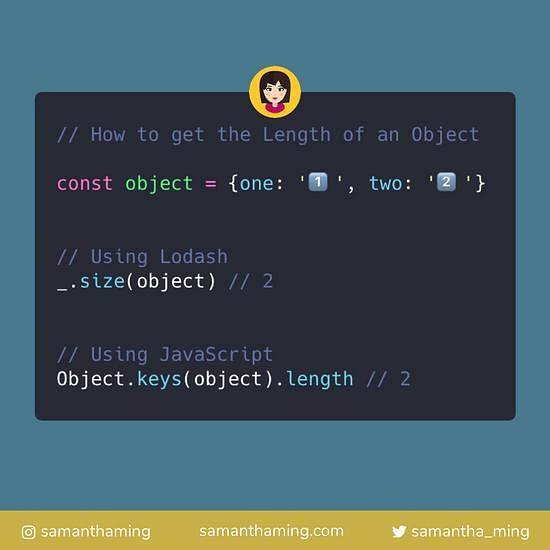

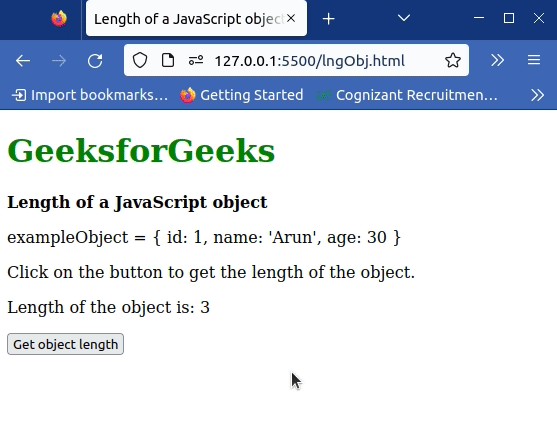


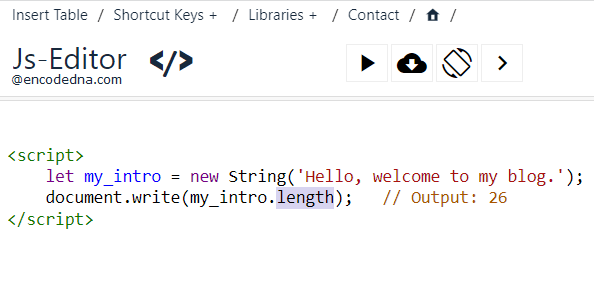
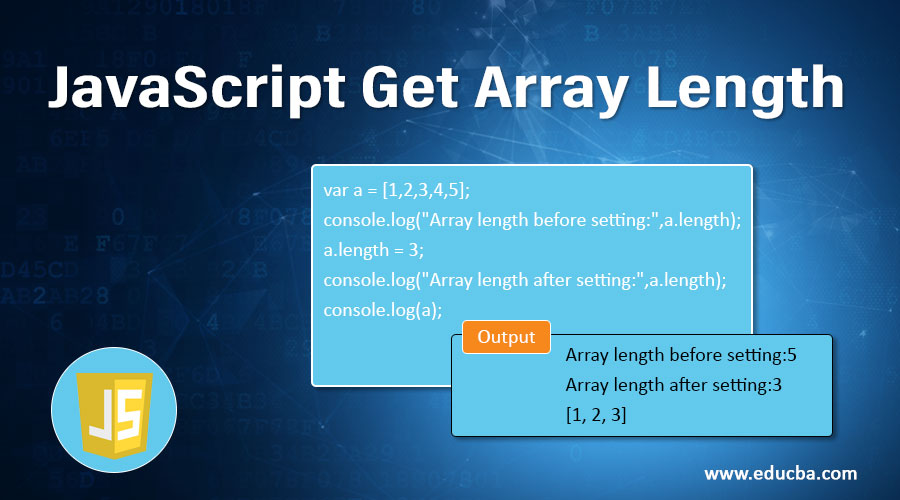



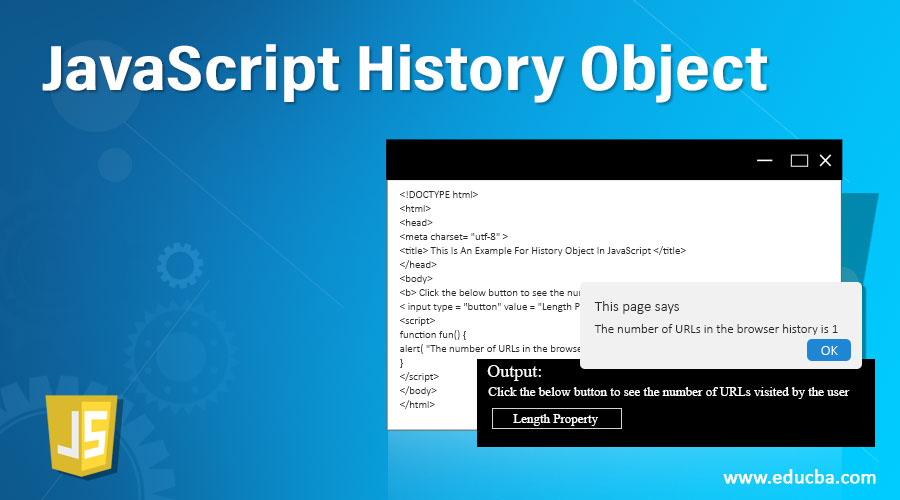
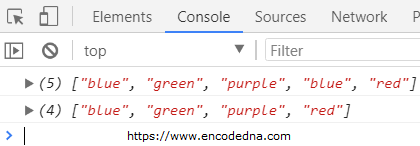



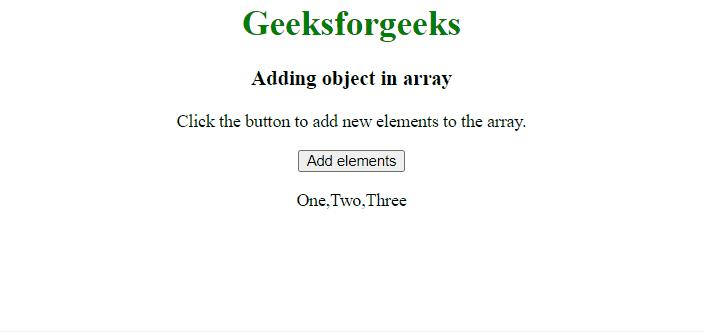

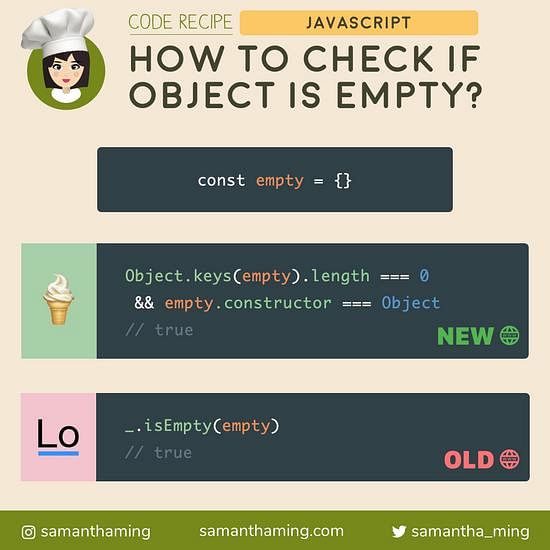
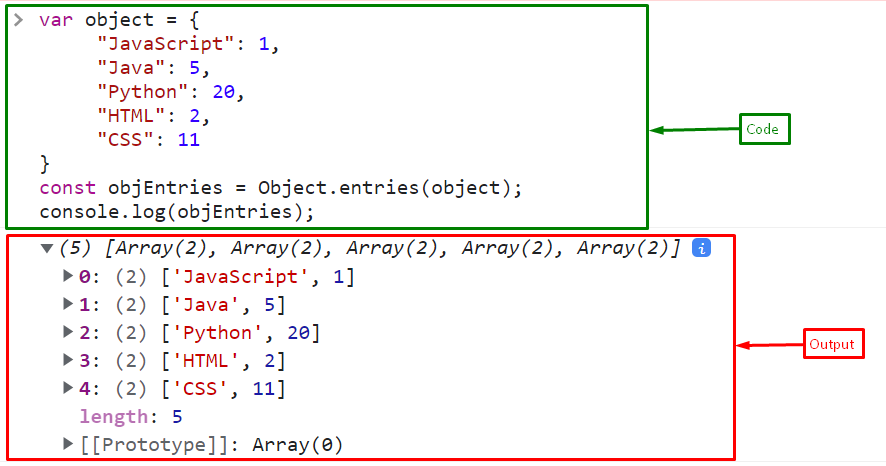


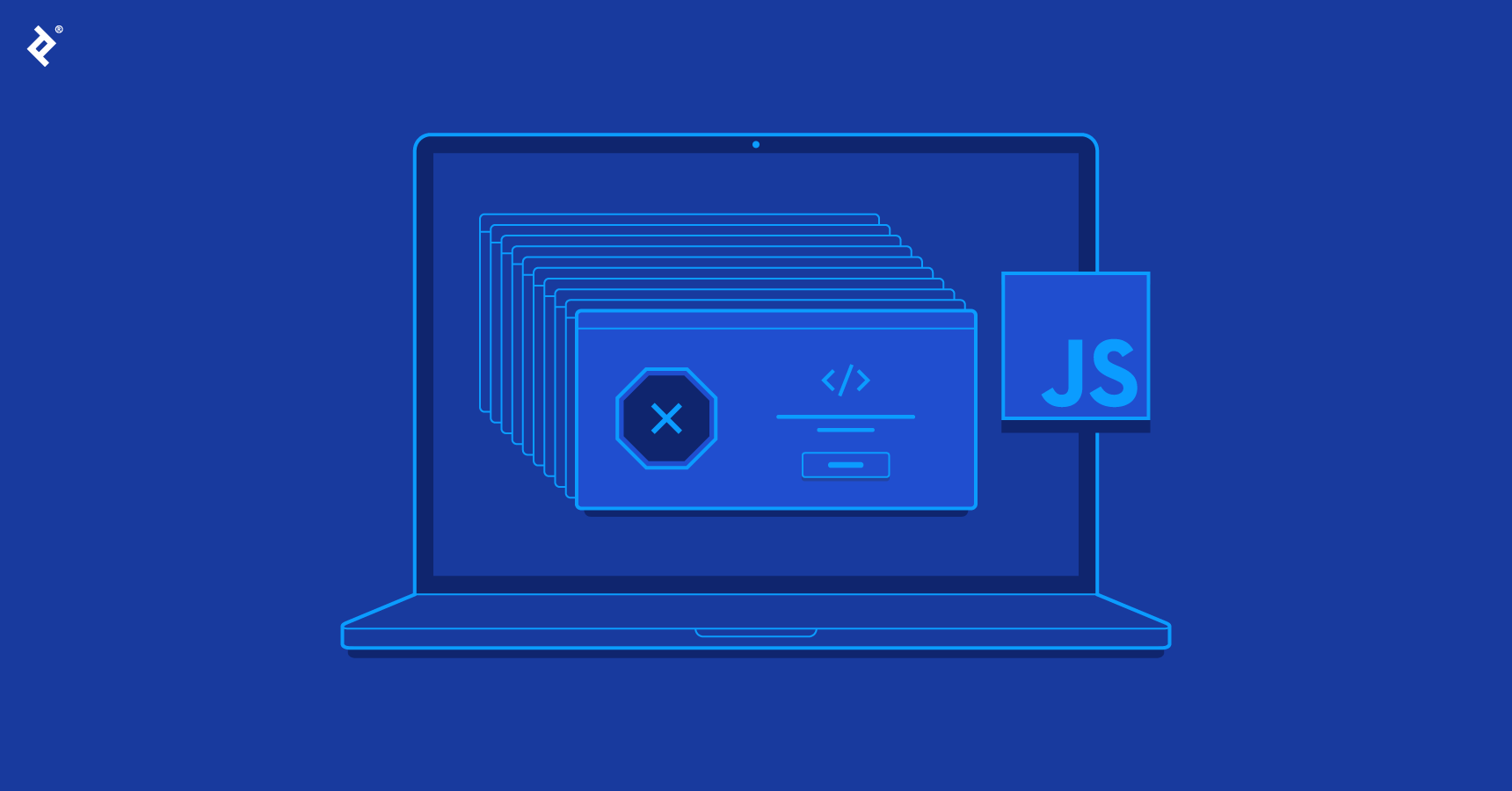

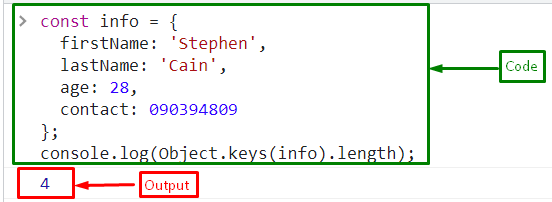
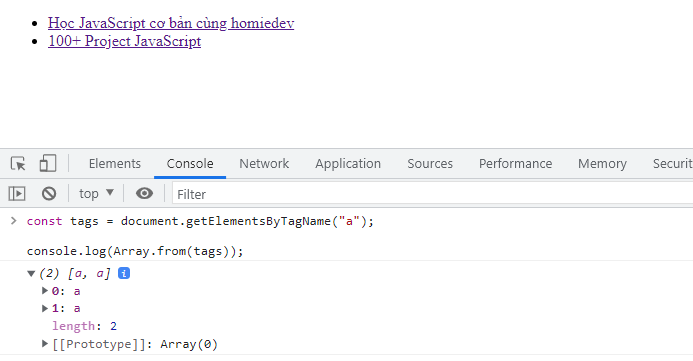

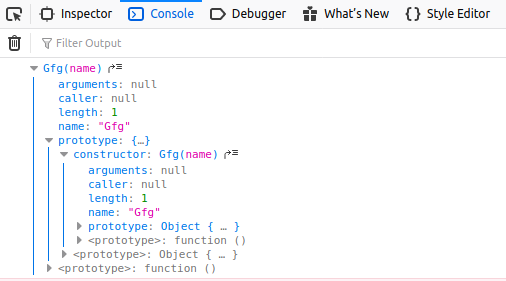

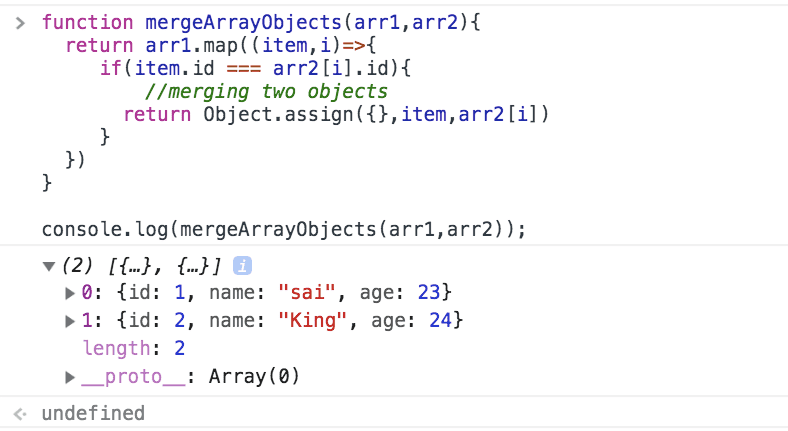











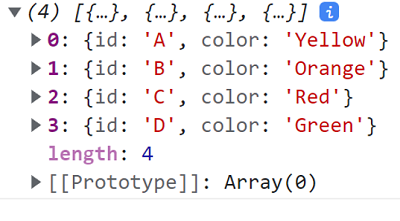
Article link: object length in javascript.
Learn more about the topic object length in javascript.
- How to Get the Length of an Object in JavaScript? – Scaler
- Find the length of a JavaScript object – GeeksforGeeks
- Length of a JavaScript object – Stack Overflow
- How to get the length of an object in JavaScript – Tutorialspoint
- JavaScript String Length property explained | Flexiple Tutorials
- How to find the total number of elements in an array in TypeScript
- How to get the length of an object in JavaScript – Level Up Coding
- Get Length of JavaScript Object – Stack Abuse
- How to Get the Length of a JavaScript Object – Tutorial Republic
- How to get the length of a JavaScript object | Sentry
- How to Get an Object Length | SamanthaMing.com
- Object.keys() – JavaScript – MDN Web Docs
- How to get the length of an object in JavaScript – Tutorialspoint
- How to get the length of an object inside an object in JS
See more: https://nhanvietluanvan.com/luat-hoc/